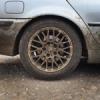What gives a car body its rigidity.
-
Similar Content
-
The body roll thread 1 2 3
By Peter C,
- 70 replies
- 4,266 views
-
Y U NO GIVE CHEVY Y'ALL
By hairnet,
- 11 replies
- 777 views
-
What is the mystery roffle car?
By gadgetgricey,
- 18 replies
- 2,190 views
-
What car for free* motoring? 1 2 3
By motorpunk,
- 76 replies
- 7,060 views
-
What’s in your work car park? 1 2 3
By The Vicar,
- 75 replies
- 8,307 views
-






Recommended Posts
Create an account or sign in to comment
You need to be a member in order to leave a comment
Create an account
Sign up for a new account in our community. It's easy!
Register a new accountSign in
Already have an account? Sign in here.
Sign In Now